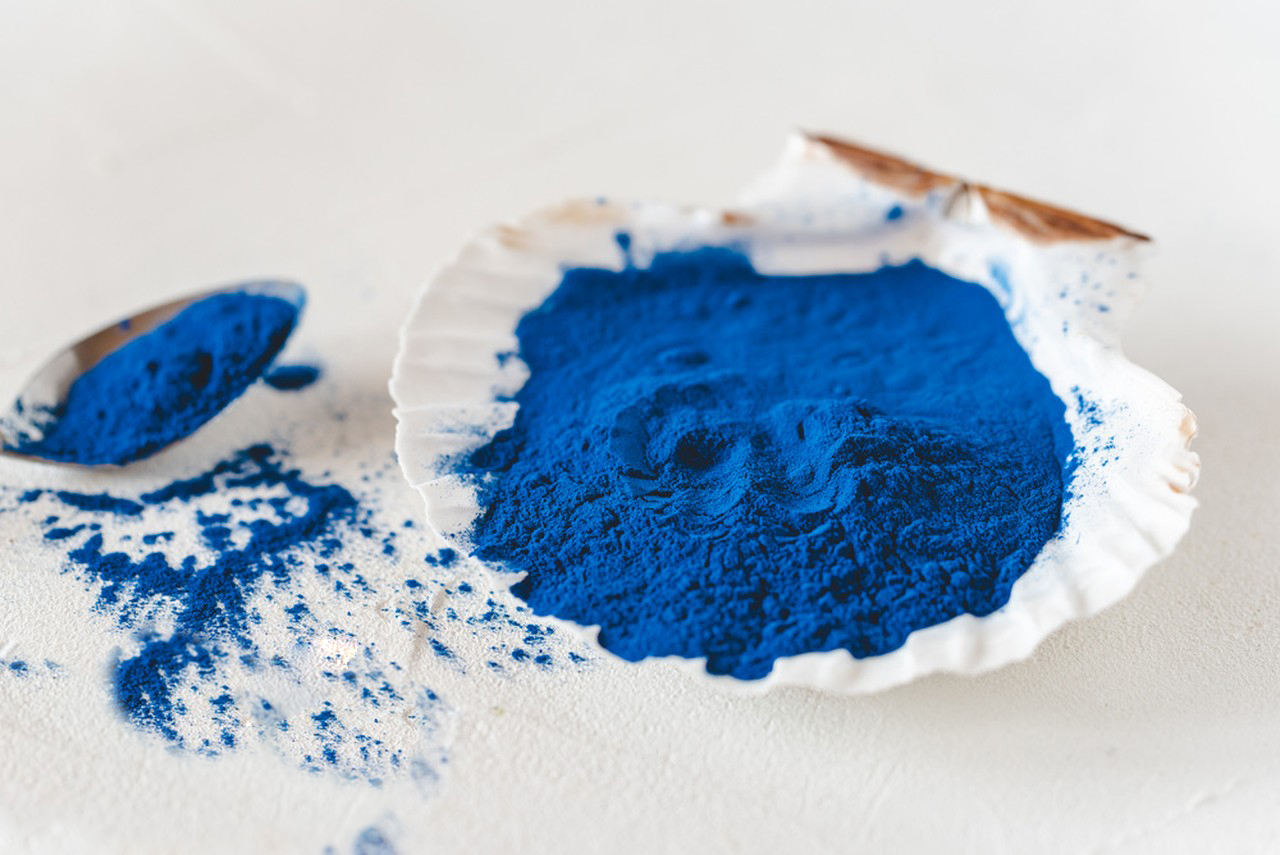Phycocyanin is a natural blue pigment found in certain types of cyanobacteria and algae, particularly in spirulina. It is a water-soluble pigment that belongs to the class of phycobiliproteins. Phycocyanin consists of two main components: the protein part and the chromophore (pigment) part. The basic ingredients of phycocyanin include:
Protein Subunit: Phycocyanin is made up of a protein subunit, which provides structural stability and solubility to the pigment. The protein subunit in phycocyanin is essential for binding the chromophore and maintaining the overall structure of the molecule.
Chromophore: The chromophore is the pigment part of phycocyanin responsible for its blue color. It is a covalently bound molecule that absorbs light in the blue and red regions of the electromagnetic spectrum. The specific structure of the chromophore in phycocyanin is essential for its unique color and light-capturing properties.
These two components work together to give phycocyanin its distinct blue color and its ability to absorb light energy, which is essential for photosynthesis in the organisms that contain it. Phycocyanin is commonly used as a natural blue food coloring and a dietary supplement due to its potential health benefits.

Adverse Effects of Phycocyanin
Phycocyanin is a natural blue pigment and a protein found in certain types of blue-green algae, such as spirulina and cyanobacteria. It has gained attention for its potential health benefits, including antioxidant and anti-inflammatory properties. However, like many compounds, phycocyanin may have some adverse effects or considerations to be aware of:
Allergic Reactions: Some individuals may be allergic to phycocyanin or the algae sources that contain it, such as spirulina. Allergic reactions can include skin rashes, itching, swelling, and even anaphylaxis in severe cases. If you are allergic to algae or have experienced allergic reactions to similar substances, you should avoid phycocyanin supplements.
Gastrointestinal Distress: In some cases, phycocyanin supplements may lead to gastrointestinal discomfort, including nausea, diarrhea, or stomach cramps. These side effects are generally mild and subside once the supplementation is stopped or the dosage is reduced.
Heavy Metal Contamination: Cyanobacteria, including some sources of phycocyanin, can accumulate heavy metals like lead and mercury from their environment. Contaminated phycocyanin supplements may pose health risks, especially if consumed in high quantities over an extended period. Therefore, it’s crucial to choose reputable sources of phycocyanin products to minimize the risk of heavy metal contamination.
Interaction with Medications: Phycocyanin may interact with certain medications or medical conditions. If you’re taking prescription medications or have a pre-existing medical condition, consult your healthcare provider before adding phycocyanin supplements to your diet, as they may affect the absorption or metabolism of other medications or have adverse effects on specific conditions.
Pregnancy and Breastfeeding: Limited research is available regarding the safety of phycocyanin during pregnancy and breastfeeding. It’s advisable for pregnant or nursing individuals to exercise caution and consult with a healthcare professional before using phycocyanin supplements.
Potential for Liver and Kidney Issues: There have been concerns raised about the possibility of liver and kidney toxicity associated with prolonged use of cyanobacteria-derived products, including phycocyanin. While there is no concrete evidence proving these risks, it’s wise to be cautious, especially if you have pre-existing liver or kidney conditions.
It’s essential to consult with a healthcare provider before starting any new supplement, including phycocyanin. They can help you determine if it is safe and appropriate for your specific circumstances and can provide guidance on dosage and potential interactions with medications or medical conditions. Additionally, always choose high-quality, reputable sources for any supplements to reduce the risk of contamination or adverse effects.
